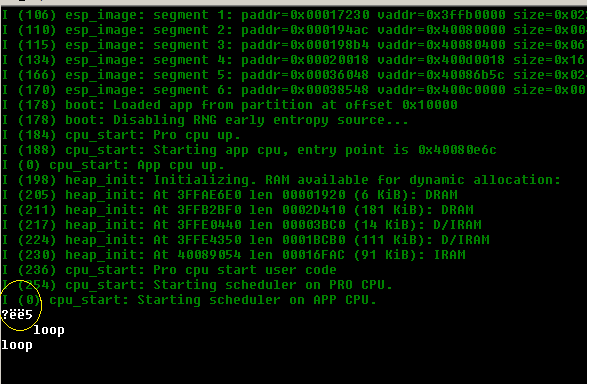hi
after a few time i try esp32-arduino core
( last actually version with 490 commits ) with ESP-IDF ( last ESP-IDF version with 4630 commits )
as component for a fun project
i noted that i get allways some rubbish character after boot
the code is simple:
//file: main.cpp
#include "Arduino.h"
void setup(){
Serial.begin(115200);
}
void loop(){
Serial.println("loop");
delay(1000);
}
the output:

i change the code then with a delay for enough time give for setup the peripherals
//file: main.cpp
#include "Arduino.h"
void setup(){
Serial.begin(115200);
delay(500);
}
void loop(){
Serial.println("loop");
delay(1000);
}
the output is little better only one character on begin sucks

i try then few things but this one character goes not away
//file: main.cpp
#include "Arduino.h"
void setup(){
Serial.begin(115200);
delay(5000);
}
void loop(){
delay(5000);
while (-1) {
Serial.println("loop");
delay(1000);
}
}
but this character sucks allways again


the character is 0xFF ( on baud 115200 )

from where this character comes?
which task has this sign?
why is it here?
can we eliminate it?
thanks
best wishes